If you or someone you love has asthma, you would likely be interested in anything that could help improve their lung function and the air they breathe. You may not realize that there are certain plants that can help with this.
I’ve had asthma my whole life and all of my children have asthma. One thing we have noticed is that common plant and tree allergies will trigger our asthma. We also get triggered by other scents such as perfumes, deodorants, and even pet dander. As much as I love plants, I had fears about bringing them inside. That is until I learned that there were some that wouldn’t trigger us and some that would even help our asthma. The best indoor plants for asthma are those that also purify the air inside your home.
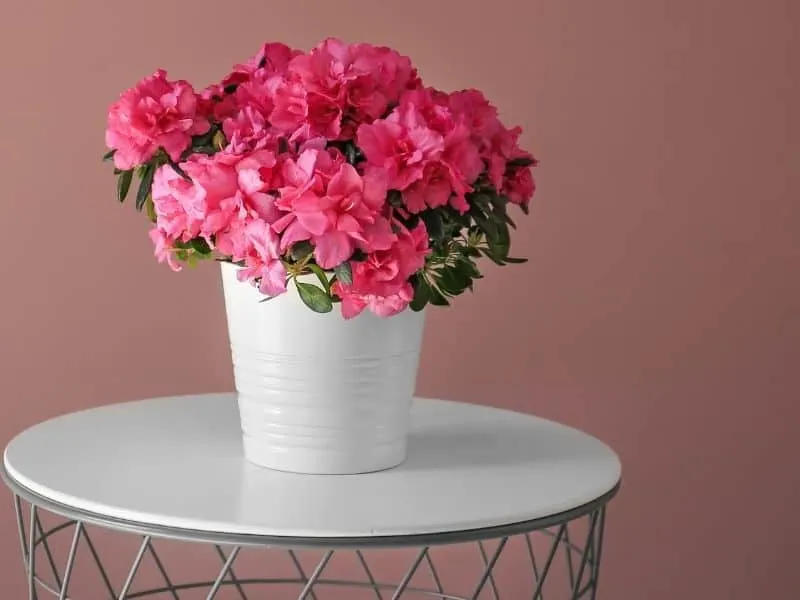
Best Indoor Plants For Asthma
If you love plants but also live with a person with asthma, you’ll just want to choose plants that help their asthma, rather than trigger it. And that all begins with learning more about common houseplants.
So, what are the best indoor plants for asthma? Well, one easy answer is any plant that purifies the air or improves indoor air quality, but that also doesn’t put off pollen. But let’s go ahead and dig a little deeper than that.
How can a plant help a person with asthma?
Maybe you’re wondering what a plant can do to help a person with asthma. That’s a very good question to ask. Nearly all plants help purify the air around them, but some do so better than others. When you add to that the fact that some also produce pollen, which is not good for asthma, you can see why a little research is important first. Some indoor plants can help improve your symptoms of asthma when you keep them around.
Now, let’s take a look at my top 11 plants for this purpose.
1. Azalea (Rhododendron spp.)
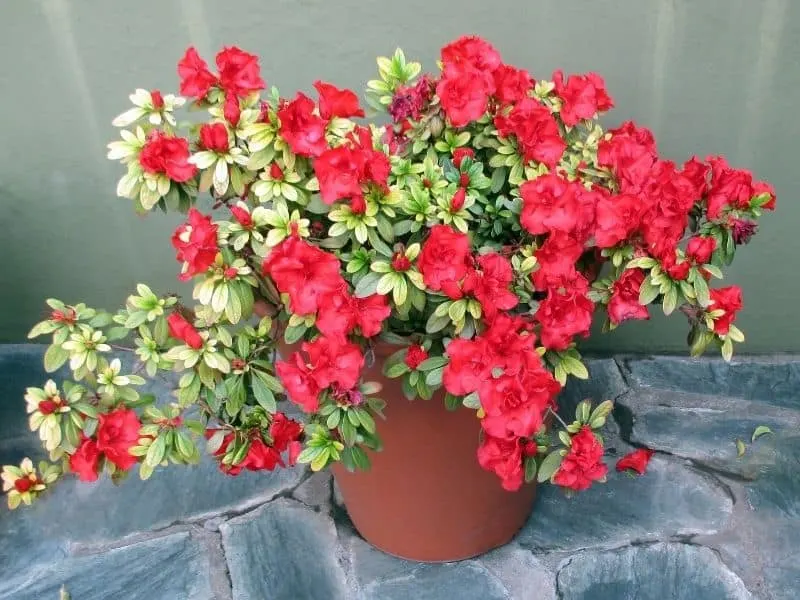
Azaleas are considered some of the best flowers and indoor plant choices for people who suffer from asthma. Allergy and asthma sufferers have to be careful with flowering plants because most have pollen or will otherwise exacerbate their asthma. Azaleas are on the “safe” list along with orchids and daffodils.
2. Peace lily (Spathiphyllum wallisii)
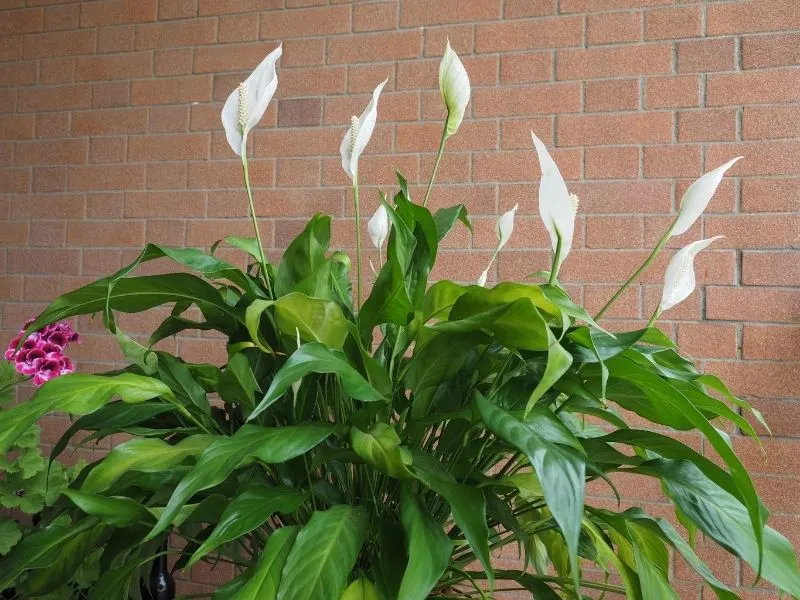
Peace lilies are not actually lilies at all but are named so for the flower that sprouts from them a few times a year. They are top of the list when it comes to plants that remove Volatile Organic Compounds (VOCs) from the air.
One downside to peace lily is that it can be toxic to humans and pets, so you need to be careful if you have pets or small children. Cats especially have been known to be very sensitive to peace lilies.
3. Devil’s ivy (Epipremnum aureum)
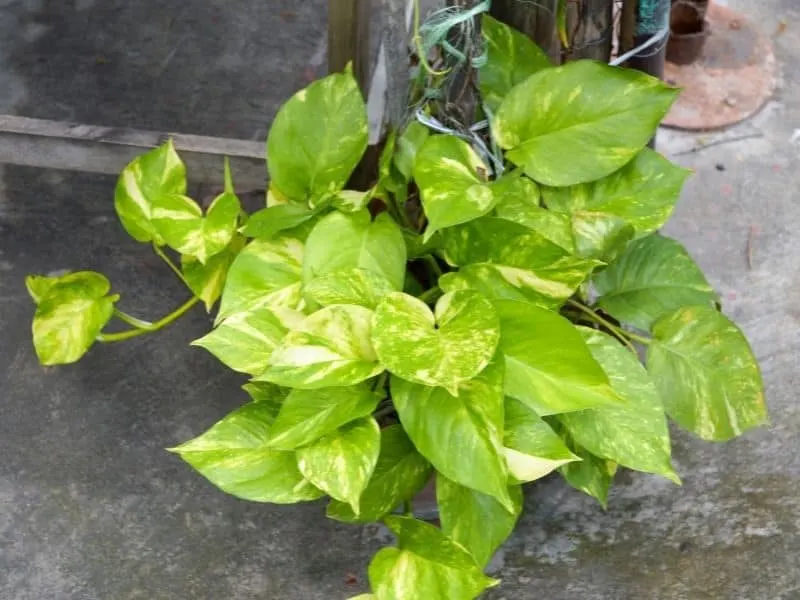
Devil’s ivy is found all over the world but is native to the Solomon Islands. It is also called “golden pothos” but got its nickname Devil’s Ivy because it is so hard to kill. You can literally place it in a dark corner of the home, and it will still thrive. Trust me, I’ve done it!
Devil’s ivy looks great in hanging baskets or in pots, grows long, pretty green vines, and will purify the air in your space, removing toxins, without putting any harmful allergens back into the air that might trigger your asthma. It’s also very easy to care for, making it a good choice.
4. Snake plant (Sansevieria trifasciata)
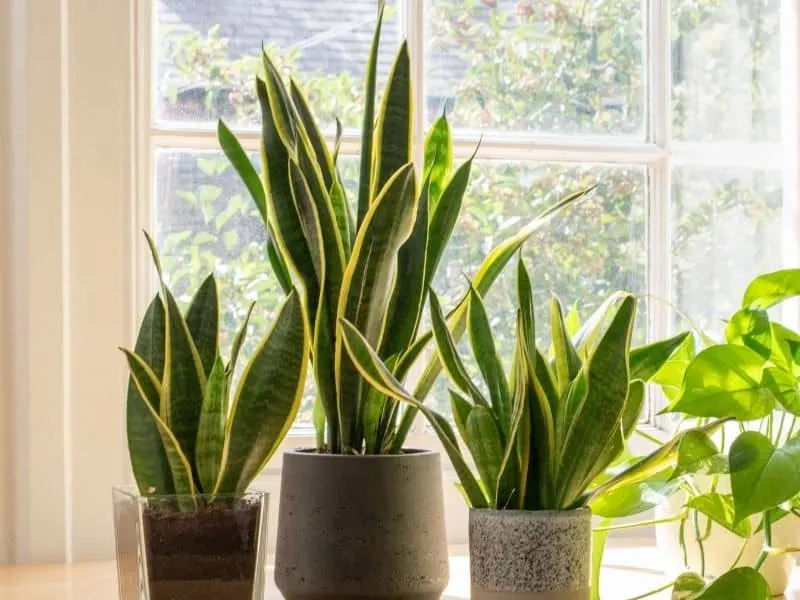
Snake plant is sometimes also called “Mother-in-Law’s Tongue” and has a very unique appearance that makes it easily recognizable from other plants. It’s native to West African but can now be found all over the globe and it does very well in many different lighting conditions.
It’s one of the best plants for purifying the air and it requires little maintenance, making it an easy choice. The snake plant is one of the best at putting fresh oxygen back into the air, which is why it is a favorite for asthma sufferers.
5. Lady palm (Rhapis excelsa)
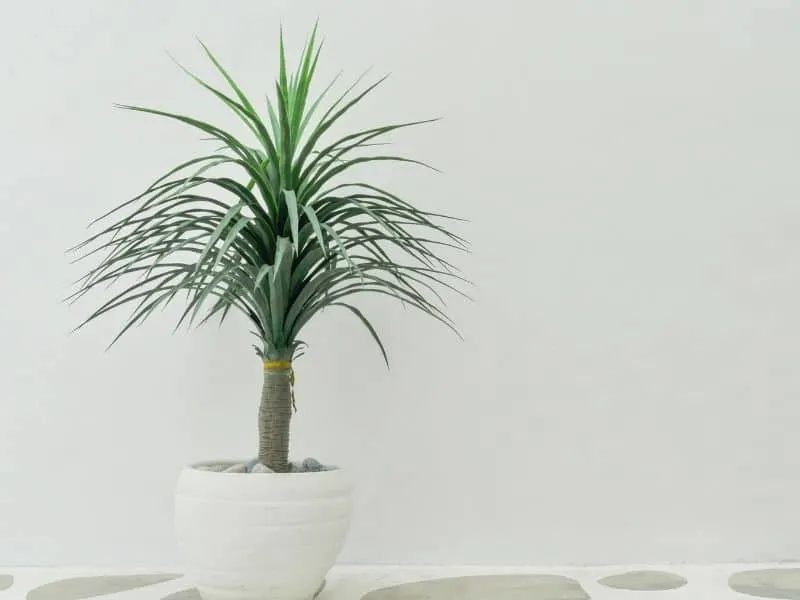
There are several reasons to love the lady palm if you have asthma. This plant is proven successful in removing airborne toxins within the home, including ammonia, formaldehyde, xylene, and carbon dioxide. But it also does more than just make oxygen. Lady palms will make the air in your home cleaner and safer for you to breathe, which is especially good for asthma sufferers.
6. Spider plant (Chlorophytum comosum)
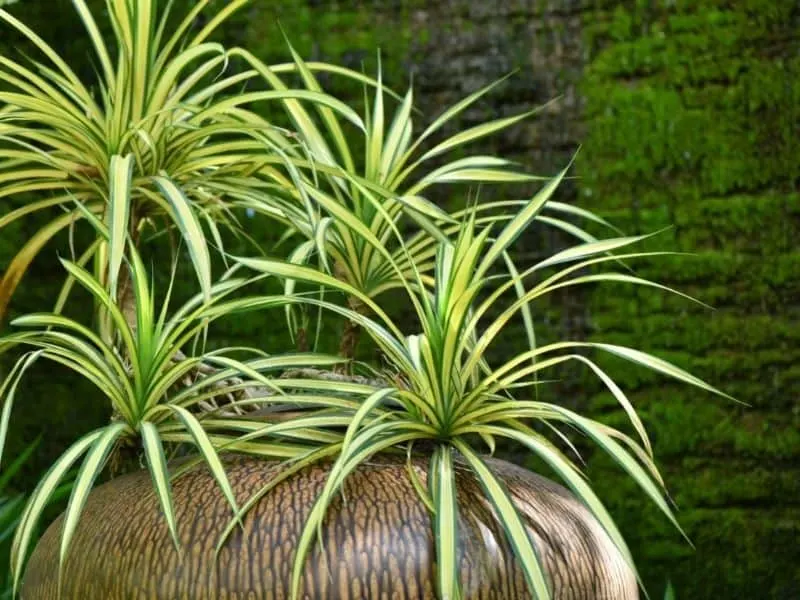
Spider plants are easy to care for, look great in a pot or a hanging basket, produce fun little “babies” that you can propagate and create additional plants with, and they are rated highly for their ability to cleanse the air. In fact, in that famous NASA study, they performed as some of the best plants at removing formaldehyde from the air.
7. Dracaena (Dracaena fragrans)
All dracaenas are good air purifiers but the red-edge dracaena is a great choice for people with asthma. It’s a low maintenance plant that’s easy to care for, and it is very efficient at removing formaldehyde from the air, along with other pollutions. They have been known to help improve air quality in smoker’s homes, too.
8. Flamingo lily (Anthurium andraeanum)
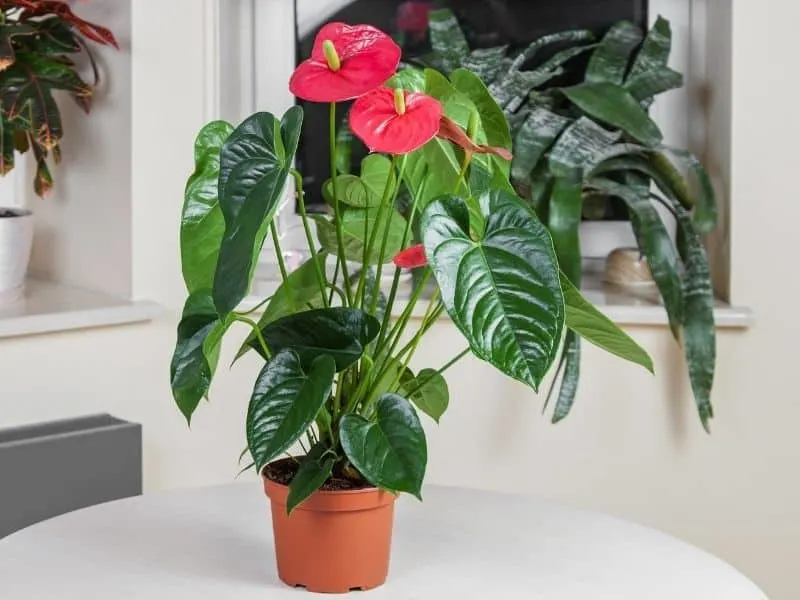
The flamingo lily is also on the list as good for asthma because it purifies the air. However, it isn’t always the easiest to keep alive. It prefers humid areas with lots of sun. If you have good windows that provide a lot of sunlight throughout the day, this could be a good choice.
If you’re new to houseplants, there are others that are good for asthma that will be easier for you as a beginner. But the beautiful, bright red flowers that bloom on this plant are one reason it’s a popular choice.
9. English ivy (Hedera helix)
English ivy is a type of creeping vine plant that is invasive in outdoor areas in the United States. English ivy looks very pretty in the home and also can reduce air toxins such as formaldehyde, xylene, and toluene from the air you breathe. It goes one step further to help asthma patients because it can reduce molds in the home, too.
A study involving children with bronchial asthma suggested that ivy leaf was effective in increasing the amount of oxygen in the lungs, but you should always take caution and speak to a professional before using plants as medicine.
10. Areca palm (Dypsis lutescens)
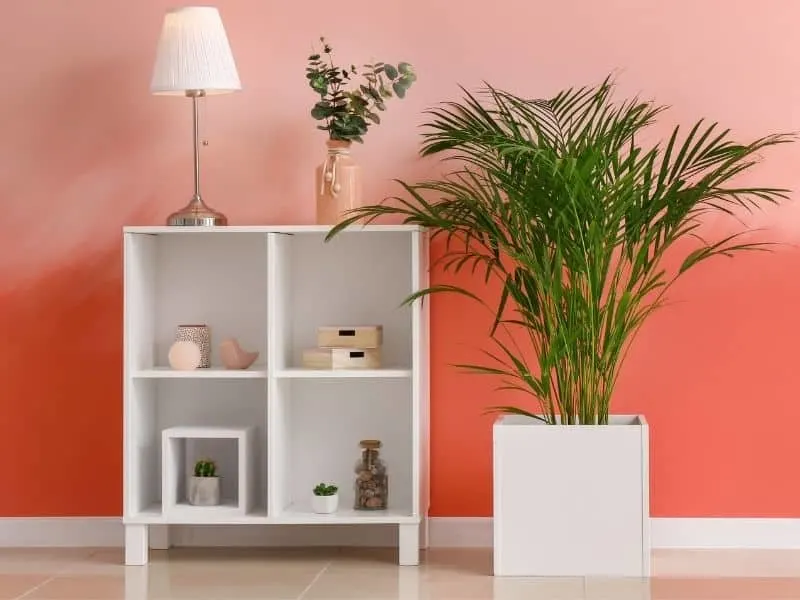
Areca palms are good air purifiers, but they also help add more humidity to the air, which makes them a great choice for people with asthma. Dry air makes asthma symptoms worse so having a few of these palms around, especially in the bedrooms of the members of the house who have asthma can be very helpful.
11. Bamboo palm (Chamaedorea seifrizii)
The bamboo palm is another great choice for people who have asthma. It’s easy to care for, grows slowly, and acts as a natural humidifier. It’s perfect for keeping the moisture levels up in the air for homes with asthma sufferers. You will see there are a lot of palms on this list. In general, they are great for people who suffer from allergies or asthma.
Male vs. female plants
If you notice that your asthma and allergies are worse during certain times of the year, there’s a logical reason for this and it can be tied to the sex of the plants around you. Most plants are both male and female, but some are not. Male plants will produce more pollen than their female counterparts. Expert studies have shown that female plants will be better for people with asthma.
Not all houseplants have a male and female of the same species, but if they do, they may have a slightly different appearance to them. You can research to learn the difference or ask an expert for help while shopping for your new houseplants.
Non-native plants
If the plants you choose are not native to your area, they may be harder to keep alive. When you have decay or rot, you can also get mold or spore growth that triggers your asthma. We’ll explain more about keeping your plants healthy below. But for now, if you’re new to indoor plants, you may want to choose native plants or those that are known for being easy to care for, at least to start.
You can work your way up to fancier, non-native plants once you learn more and get more experience with caring for them or choose one at a time that you really love and learn how to care for it properly and keep it stable before moving to another.
Keeping indoor plants healthy and safe for you
Even when you choose the right plants for asthma, it’s key that you keep them healthy. If your plants start to mold or develop rot from improper care, that will get into the air you breathe and trigger your asthma.
It’s important to read up on each new plant you adopt and bring into your home so that you know how to care for it properly. Also, don’t trust the cards or inserts that come with your plants to tell you how. For example, orchids also come with the ice cube instructions for watering, but experts will tell you this is how they die for most people.
With that in mind, here are some general guidelines to keeping your asthma-friendly plants healthy:
- Avoid over-watering which causes mold and insects
- Use a properly draining pot
- Keep your plant in the proper light and temperature conditions
- Trim away dead leaves
- Clear out moldy soil and replace if needed
- Look into natural fertilization methods (like adding eggshells)
Conclusion of best indoor plants for asthma
Now that you have this list of best indoor plants for asthma, and you know a bit about each one and how to care for them properly, you can begin collecting. You may even have a few of these already if you’ve started collecting houseplants because some of them are common and popular.
If you’ve always held back on plants because of your asthma, as I did, then start with one or two from the list, that are easy to care for, like the peace lily and the snake plant. Read up on them more and learn all that you can about caring for them.
When those plants are thriving and doing well, add another 1-2 more types. Also, remember that you can have more than one of the named plants and it just increases how well they work to purify the air in your home and help your asthma. For example, you can have a snake plant in every bedroom, and it will cleanse the air and put out more, new oxygen for you to breathe while you sleep.
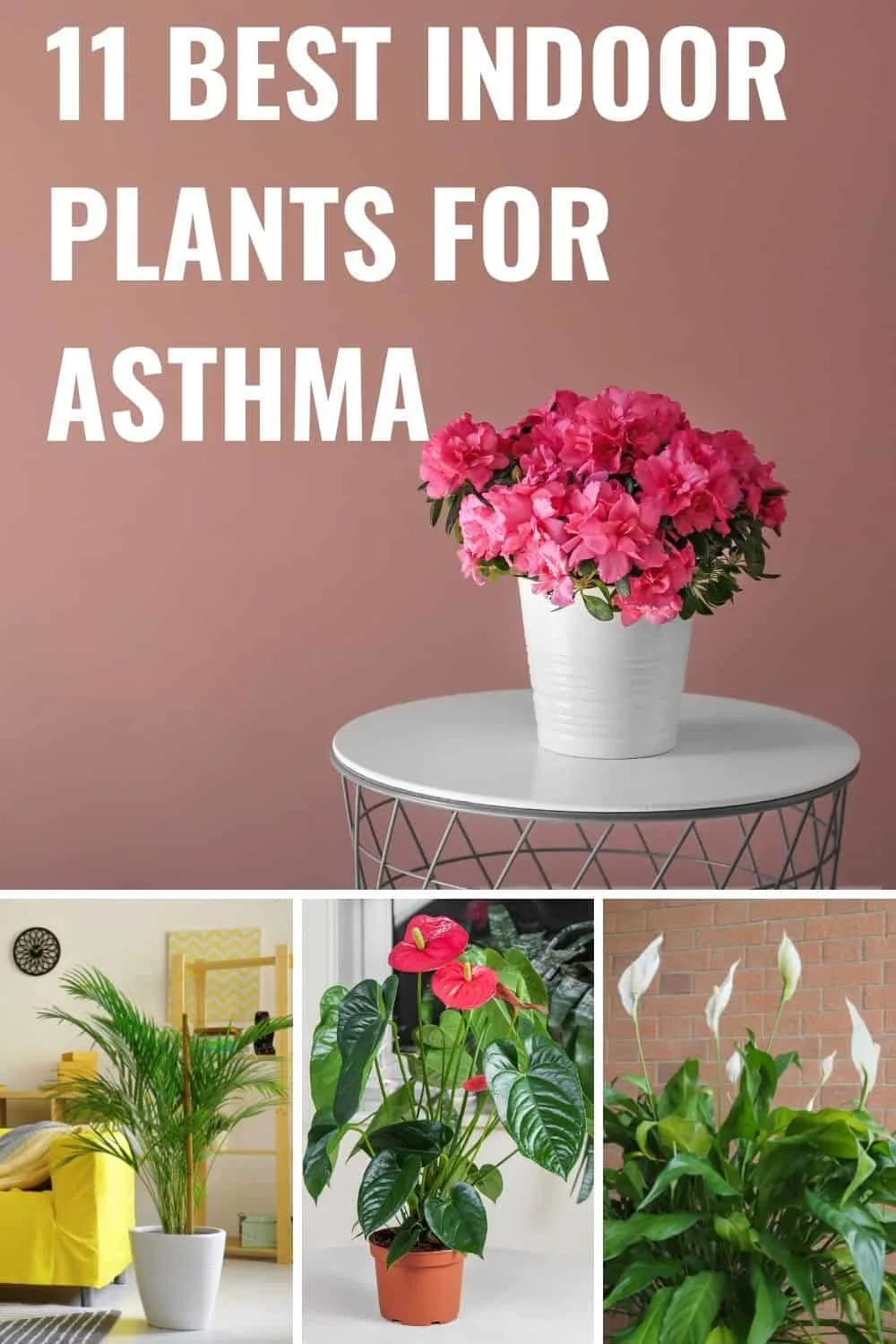




22 Best Indoor Plants For Bedroom And Sleep
Thursday 13th of May 2021
[…] for the bedroom are also those that work to purify the air. All of the plants on this list of best indoor plants for asthma are good choices for that reason, even if you don’t have asthma. As you can see, plants can […]